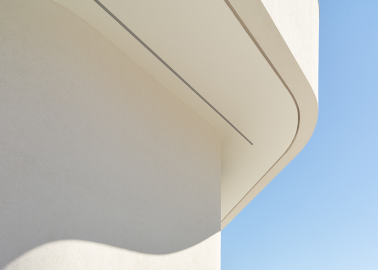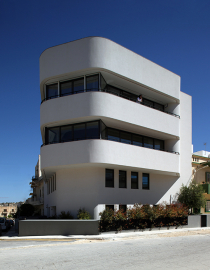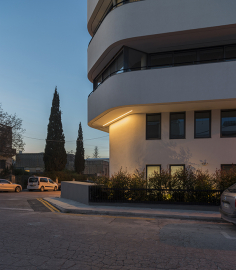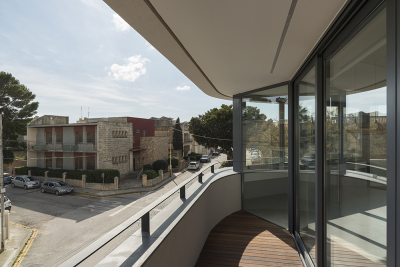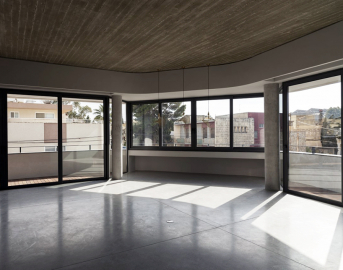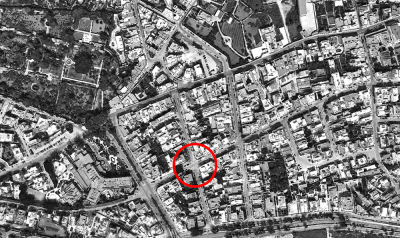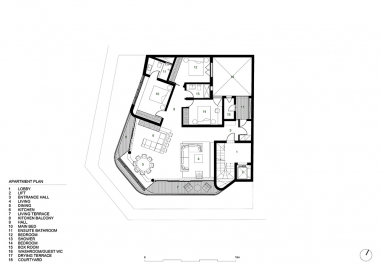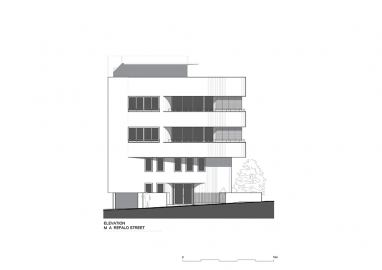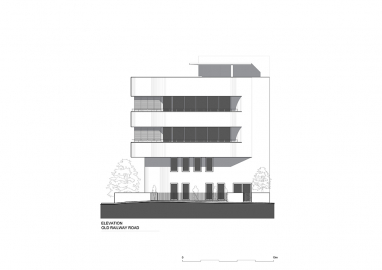Threeplusone
Designed for comfortable, contemporary living, Threeplusone demonstrates an elegant, context-driven approach to introducing considerate, medium-scale residential development within sensitive sites.
Replacing a dilapidated single-storey dwelling sited between two of Malta’s most beloved villages, Threeplusone takes cues from its surrounding context whilst addressing contemporary living needs, prioritising light, space and functionality.
The building responds stylistically to its inherited streetscape, echoing the elegance of massing and proportion of a Modernist corner house that sits across the road. Large apertures and deeply recessed terraces wrap the spartan facade at upper levels, whilst its silicato finish supports thermal efficiency and celebrates bright Mediterranean light – recalling the tradition of bleach- white coastal architecture. The building’s distinct curved form works cohesively with the articulation of the street, bending subtly along its corner site. Its projecting terraces create valuable shading to lower levels and maximise the size of the living spaces inside. At street level, the building’s perimeter is lined with trees, lending privacy to the office space tucked within the semi-basement level below.
The terraces allow light to cascade into the south-facing living areas at the front of the building. Inside, the building works both to maximise usable space and achieve continuity between inside and out. Living areas are pulled towards the terraces, whilst bedrooms and utility rooms fan out toward a rear courtyard, drawing in natural light and facilitating ventilation.
Threeplusone was designed as a reinforced concrete structure, with an open basement which extends beneath the perimeter planter in order to maximise its size. The structure allows for the open corners with curved balconies wrapping around them in order for the living spaces to be as open as possible - yet sheltered - to the south facing sun. Infill walls were built using 'Thermablock' a proprietary sandwich of concrete blockwork and expanded polystyrene insulation - the latter was also used to cover rooftops and horizontal exposed surfaces.

